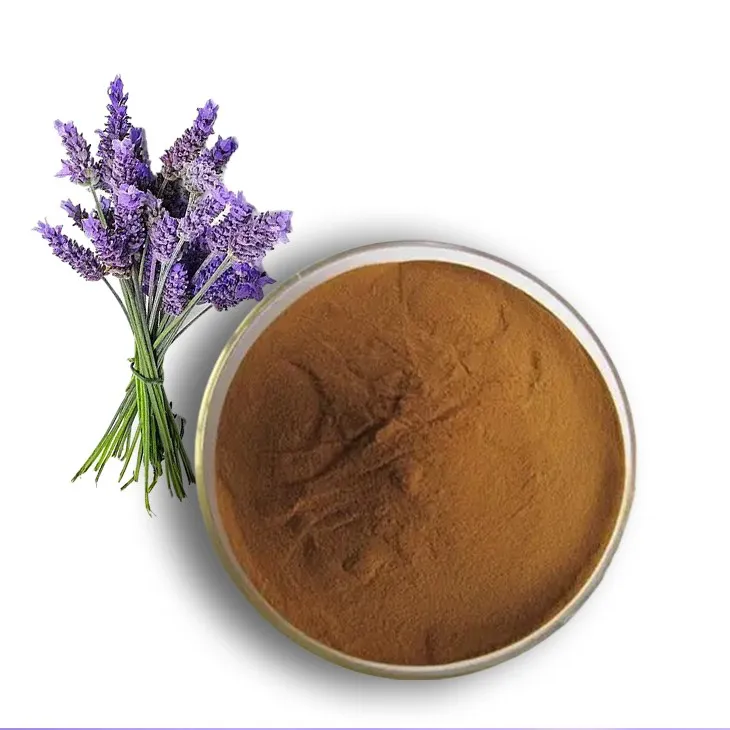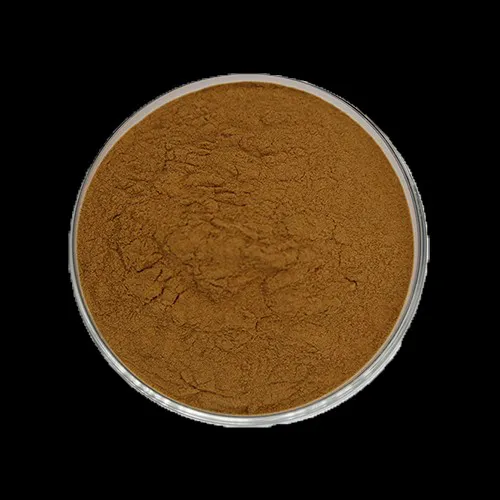- 0086-571-85302990
- sales@greenskybio.com
The best method for extracting lavender extract.
2024-11-28

1. Introduction
Lavender, known for its pleasant aroma and various beneficial properties, has been widely used in many fields such as perfumery, cosmetics, and aromatherapy. The extraction of Lavender Extract is crucial to obtain its valuable components. There are several methods available for this purpose, each with its own characteristics in terms of yield, purity, and cost - effectiveness. In this article, we will explore these methods comprehensively to find the optimal approach.

2. Traditional extraction methods
2.1 Steam distillation
Principle: Steam distillation is one of the most common traditional methods for extracting Lavender Extract. It is based on the fact that when steam is passed through the lavender plant material, the volatile compounds in the lavender, which are responsible for its aroma and many of its beneficial properties, vaporize along with the steam. The vapor mixture is then condensed back into a liquid, and the Lavender Extract is separated from the water.
Yield: The yield of lavender extract obtained by steam distillation can vary depending on factors such as the quality of the lavender raw material, the distillation time, and the equipment used. Generally, it can produce a relatively moderate amount of extract. However, compared to some modern methods, the yield may not be as high.
Purity: The purity of the extract obtained by steam distillation is relatively high. Since the process mainly targets the volatile compounds, there is less contamination from non - volatile substances. However, some impurities may still be present, such as small amounts of water - soluble compounds that are carried over during the condensation process.
Cost - effectiveness: Steam distillation equipment is relatively simple and inexpensive compared to some high - tech extraction methods. The raw material, lavender, is widely available. However, the process can be time - consuming, which may increase the overall cost in terms of labor and energy consumption.
2.2 Solvent extraction
Principle: Solvent extraction involves using a solvent, such as ethanol or hexane, to dissolve the desired compounds from the lavender plant. The solvent is chosen based on its ability to selectively dissolve the target compounds while leaving behind unwanted substances. After the extraction, the solvent is removed, usually by evaporation, to obtain the lavender extract.
Yield: Solvent extraction can often achieve a relatively high yield of lavender extract. The solvent can penetrate deep into the plant material and extract a large amount of the target compounds. However, the yield can also be affected by factors such as the type of solvent, the extraction time, and the ratio of solvent to plant material.
Purity: The purity of the extract obtained by solvent extraction may be lower compared to steam distillation in some cases. This is because the solvent may also dissolve some unwanted substances along with the desired ones. Moreover, complete removal of the solvent can be a challenge, and any residual solvent in the extract can affect its purity.
Cost - effectiveness: The cost of solvents and the equipment required for solvent extraction can be significant. Additionally, the process of solvent removal, especially for solvents with a low boiling point like hexane, needs to be carefully controlled to avoid safety hazards. However, if the extraction is carried out on a large scale, the cost per unit of extract can be reduced.

3. Modern extraction methods
3.1 Supercritical fluid extraction
Principle: Supercritical fluid extraction (SFE) uses a supercritical fluid, most commonly carbon dioxide (CO₂), as the extraction solvent. A supercritical fluid has properties between those of a gas and a liquid. CO₂ is preferred because it is non - toxic, non - flammable, and easily available. At supercritical conditions, CO₂ can efficiently dissolve the target compounds from the lavender. After the extraction, the pressure is reduced, and the CO₂ reverts to a gas, leaving behind the pure lavender extract.
Yield: SFE can achieve a high yield of lavender extract. The supercritical CO₂ can penetrate the plant material effectively and extract a large amount of the valuable compounds. The yield can be optimized by adjusting parameters such as pressure, temperature, and extraction time.
Purity: The purity of the extract obtained by SFE is very high. Since CO₂ is a clean solvent and can be easily removed completely, there is little to no residue in the final extract. This results in a highly pure lavender extract with a high concentration of the desired compounds.
Cost - effectiveness: Although the initial investment in SFE equipment is relatively high, in the long run, it can be cost - effective. The cost of CO₂ is relatively low, and the process is relatively fast compared to some traditional methods. Moreover, the high purity of the extract means that less waste is produced, which can also contribute to cost savings.
3.2 Microwave - assisted extraction
Principle: Microwave - assisted extraction (MAE) utilizes microwave energy to heat the lavender plant material and the extraction solvent (if used). The microwave radiation causes the molecules in the plant material to vibrate, which increases the extraction efficiency. This method can be combined with solvent extraction or steam distillation to enhance the overall extraction process.
Yield: MAE can significantly increase the yield of lavender extract. The rapid heating and agitation of the plant material by microwaves lead to a more efficient extraction of the target compounds. The yield can be further improved by optimizing the microwave power, extraction time, and the ratio of plant material to solvent (if applicable).
Purity: The purity of the extract obtained by MAE depends on the method it is combined with. When combined with solvent extraction, the purity may be affected by the solvent used, similar to traditional solvent extraction. However, when combined with steam distillation, it can potentially improve the purity by reducing the extraction time and minimizing the degradation of the target compounds.
Cost - effectiveness: The equipment for MAE is relatively inexpensive compared to SFE. The energy consumption of MAE can be relatively low, especially when compared to traditional steam distillation which requires longer heating times. However, the overall cost - effectiveness also depends on the scale of extraction and the combination with other extraction methods.

4. Comparison of different extraction methods
Yield:
- Supercritical fluid extraction and microwave - assisted extraction generally offer higher yields compared to traditional steam distillation.
- Solvent extraction can also achieve a relatively high yield, but it may be affected by more factors compared to SFE and MAE.
Purity:
- Supercritical fluid extraction provides the highest purity among the methods discussed.
- Steam distillation also offers relatively high purity, while solvent extraction may have some purity issues due to solvent residues.
- The purity of microwave - assisted extraction depends on the associated extraction method.
Cost - effectiveness:
- Although supercritical fluid extraction has a high initial investment in equipment, it can be cost - effective in the long run due to high yield, high purity, and relatively low cost of the extraction solvent (CO₂).
- Steam distillation is relatively cost - effective for small - scale operations, but it may become less so for large - scale production due to its time - consuming nature.
- Solvent extraction has significant costs associated with solvents and solvent removal, but can be economical for large - scale production if these costs are managed well.
- Microwave - assisted extraction has relatively low equipment cost and energy consumption, making it a potentially cost - effective option, especially when combined with other methods.
5. Conclusion
Each extraction method has its own advantages and disadvantages in terms of yield, purity, and cost - effectiveness. For small - scale or traditional applications where simplicity and lower initial investment are important, steam distillation may be a suitable choice. Solvent extraction can be considered for large - scale production where high yield is crucial, but with proper management of solvent - related issues. For those seeking high - purity extracts, supercritical fluid extraction is the optimal method, although it requires a higher initial investment. Microwave - assisted extraction, especially when combined with other methods, can offer a balance between yield, purity, and cost - effectiveness, making it a versatile option in the extraction of lavender extract. The choice of the best method ultimately depends on the specific requirements and resources available for the extraction process.
FAQ:
Q1: What are the traditional methods for extracting lavender extract?
Traditional methods for extracting lavender extract mainly include steam distillation. In steam distillation, steam is passed through the lavender plant material. The heat causes the essential oils and other soluble components in the lavender to vaporize. These vapors are then condensed back into a liquid, which contains the lavender extract. Another traditional approach could be solvent extraction, where a suitable solvent is used to dissolve the desired components from the lavender, and then the solvent is removed to obtain the extract.
Q2: How does modern technology improve the extraction of lavender extract?
Modern technology offers several improvements. Supercritical fluid extraction (SFE) is one such method. Using supercritical CO₂ as the extraction medium, it can operate at lower temperatures compared to traditional methods. This helps in preserving the delicate components of lavender and can result in higher - quality extracts. Additionally, microwave - assisted extraction can be used. Microwaves can selectively heat the plant material, increasing the efficiency of extraction by enhancing the mass transfer of the active components from the lavender into the extraction solvent, leading to potentially higher yields and better purity.
Q3: What factors affect the yield of lavender extract during extraction?
The factors affecting the yield include the extraction method itself. For example, some methods like supercritical fluid extraction may have a higher yield compared to traditional steam distillation due to more efficient extraction mechanisms. The quality and part of the lavender plant used also matter. Younger and fresher lavender may yield more extract. The particle size of the plant material can influence yield; smaller particles generally offer a larger surface area for extraction, increasing the yield. The extraction time and temperature also play crucial roles. Longer extraction times may increase yield up to a certain point, but excessive time can also lead to degradation of the extract. Appropriate temperature control is necessary as too high or too low a temperature can affect the solubility and stability of the components being extracted.
Q4: How is the purity of lavender extract determined?
The purity of lavender extract can be determined through various analytical techniques. Gas chromatography (GC) is commonly used. It can separate and analyze the different components in the extract, allowing for the identification and quantification of the main active ingredients in lavender, such as linalool and linalyl acetate. High - performance liquid chromatography (HPLC) is also a useful tool. It can detect and measure the levels of different compounds in the extract more precisely, especially for non - volatile components. Spectroscopic methods like ultraviolet - visible (UV - Vis) spectroscopy can also provide some information about the purity by analyzing the absorption spectra of the extract, which is related to the types and amounts of compounds present.
Q5: Which extraction method is the most cost - effective for lavender extract?
The cost - effectiveness of an extraction method depends on multiple factors. Steam distillation is a relatively cost - effective traditional method as it requires simple equipment and has been widely used for a long time. However, the yield may not be as high as some modern methods. Supercritical fluid extraction, although it can produce high - quality extracts with good yields, requires more expensive equipment and higher - pressure operation, which may increase the overall cost. Solvent extraction may be cost - effective in terms of equipment, but the cost of solvents and the need for solvent removal and disposal can add to the cost. In general, for small - scale production with less emphasis on high purity, steam distillation may be the most cost - effective, while for large - scale production with high - quality requirements, a more comprehensive cost - benefit analysis considering long - term efficiency and product value is needed.
Related literature
- Advances in Lavender Extract Extraction Techniques"
- "Comparative Study of Traditional and Modern Methods for Lavender Extract Production"
- "Optimizing Yield and Purity in Lavender Extract Extraction"
- ▶ Hesperidin
- ▶ citrus bioflavonoids
- ▶ plant extract
- ▶ lycopene
- ▶ Diosmin
- ▶ Grape seed extract
- ▶ Sea buckthorn Juice Powder
- ▶ Beetroot powder
- ▶ Hops Extract
- ▶ Artichoke Extract
- ▶ Reishi mushroom extract
- ▶ Astaxanthin
- ▶ Green Tea Extract
- ▶ Curcumin Extract
- ▶ Horse Chestnut Extract
- ▶ Other Problems
- ▶ Boswellia Serrata Extract
- ▶ Resveratrol Extract
- ▶ Marigold Extract
- ▶ Grape Leaf Extract
- ▶ blog3
- ▶ blog4
-
Bulk purchase of orange - flavored powder.
2024-11-28
-
Nature's best cytisine.
2024-11-28
-
Kudzu root extract suppliers.
2024-11-28
-
The Most Well - received Vitamin B9 Powder.
2024-11-28
-
Suppliers of Organic β - Carotene Powder.
2024-11-28
-
Moringa powder
2024-11-28
-
Camu Camu Extract
2024-11-28
-
Cat Claw Extract
2024-11-28
-
Peppermint Extract Powder
2024-11-28
-
Senna Leaf Extract
2024-11-28
-
Buckthorn bark extract
2024-11-28
-
Aguaje Extract
2024-11-28
-
Chia Seed Powder
2024-11-28
-
Tongkat Ali Extract
2024-11-28
-
Ivy Extract
2024-11-28





















